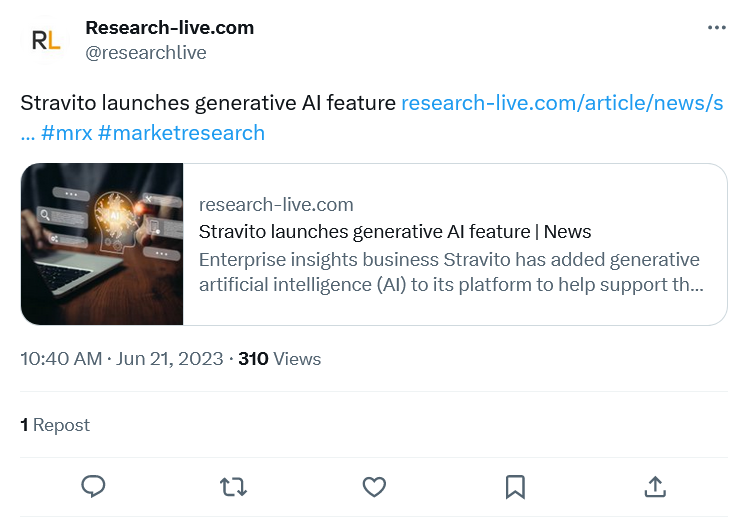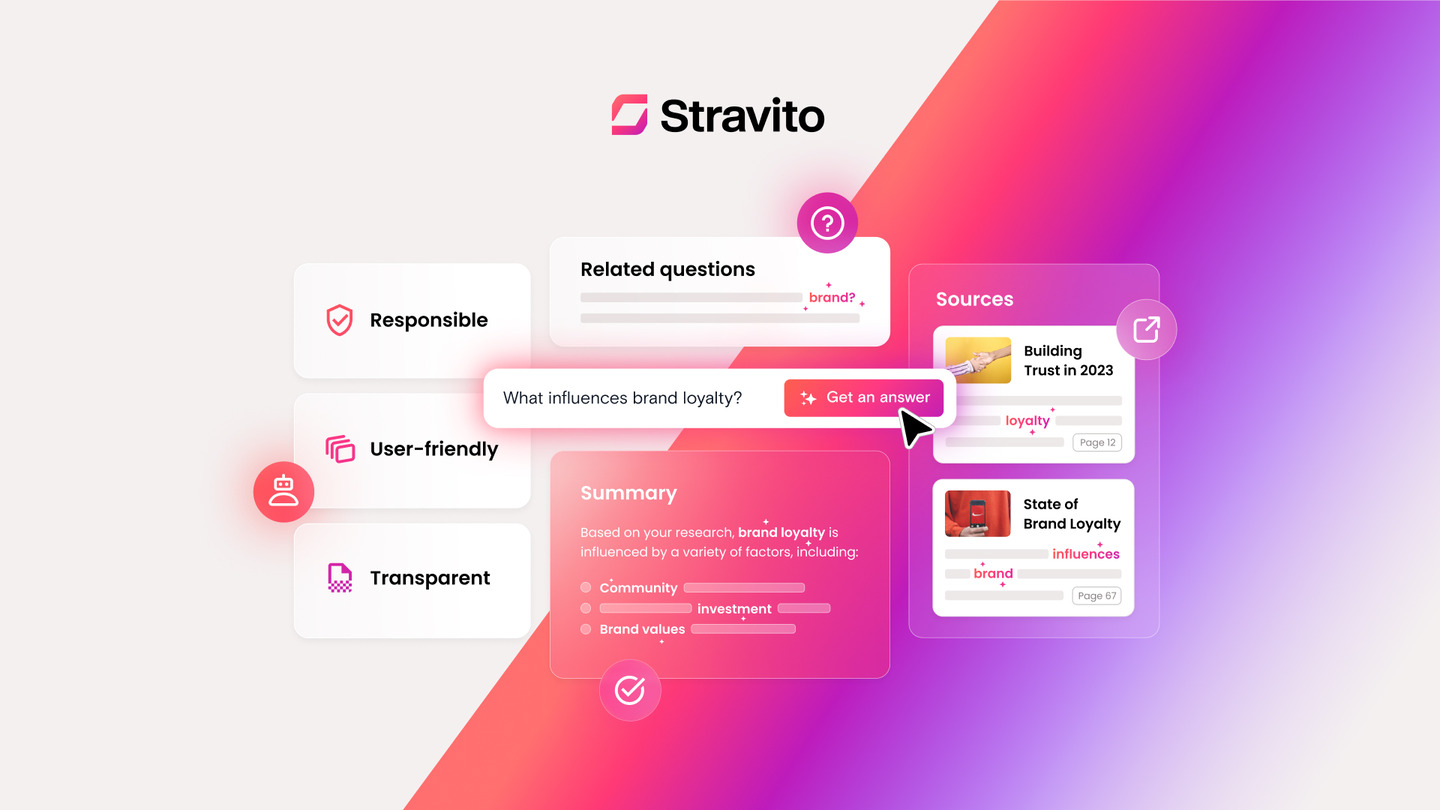Responsible implementation of enterprise generative AI applications

• Some enterprises are uncertain which applications of generative AI will be transformative for them.
• Focusing on real-world pain-points helps direct businesses in their applications.
• It’s incumbent on tech leaders to learn generative AI technology so they use it responsibly.
Despite the huge attractions of new AI applications for enterprise, and the idea they carry of being able to deliver almost magical improvements to the chain of processes that makes any enterprise successful, many businesses have been hesitant to get on board the AI application train.
There are plenty of good reasons for that. Initial surprise at the way such a transformative technology was launched into the world, and the absolute gold rush that followed, as lots of companies scrambled to get the benefits of being early adopters, for one.
Data collection and data integrity issues, for another – generative AI has had a meteoric rise since it launched in October, 2022, but it’s also had some hefty setbacks and significant probing into the nooks and crannies of its training data and its models.
Headlines about how it was going to kill off the human race, human jobs, and probably, in some intangible way, the rest of the planet too probably didn’t help, either.
Generative AI applications: Making your first choices.
In Part 1 of this article, we sat down with Thor Philogéne, CEO of Stravito, a company that specializes in creating insight platforms for enterprises-level businesses, because he’s just finished implementing the company’s first AI application to serve high-profile enterprise clients, so we felt he could tell us why some enterprises are still stuck in a “fight or flight” moment in regards to generative AI applications.
He told us that lots of enterprises were stuck with a business and a technology, and no real idea of how to intelligently apply one to the other. He also advised any enterprises that were still stuck in that moment to learn to understand the technology, its potential, its limits and its scope, but more importantly, to learn the real-life pain-points in their business, and use those as the focus-points for their AI applications, so the benefit of the application is tangible and measurable over time. We had a question about the time factor.
THQ:
Generative AI in business is still very much in its early stages, and yet it’s had an explosive level of take-up over the course of the last year. How far away do you think we are from a point where it becomes a ubiquitous reality, rather than something that has to be carefully chosen, and agonized over as a major business expense?
TP:
Think of it like the internet. If we go back 20 years to the first bubble, there were companies that were “internet companies,” and then gradually, people stopped calling them “internet companies,” because gradually, every single company became an internet company.
Think of Nike. The largest percentage of its sales is online. It sells direct to consumers through its online channels. Twenty years ago, no-one would have dared to call Nike an “internet company,” but yet, that’s how it sells today.
So I think gradually, generative AI applications will become part of everything. And as it becomes part of everything, we’ll stop drawing attention to companies’ generative AI. It’ll just be an expected, normal part of the world around us.
THQ:
It’ll become invisible by its ubiquity?
TP:
Exactly.
Generative AI applications at Stravito.
THQ:
You’ve just implemented the first of your generative AI applications at Stravito. You’ve talked about finding the pain-points in your organization and using the technology to address them. Talk us through the process you used with your own application.
TP:
For us, it’s been transformative in the sense that our new generative AI features really changed the traditional search experience. So instead of simply typing a query, and having it point to pages in documents where the search terms, or relevant answers, are found, what we now do at Stravito is let the AI engine find the actual nuggets that answer the user’s natural language question.
Then the AI summarizes what it’s found in a well-versed answer. Our platform takes pre-existing information from the customer’s knowledge base, which ensures the reliability of the data in the responses that come back.

Using generative AI applications responsibly can bring you – and your customers – dividends.
When we developed this, it was essential that the generative AI implementation that we had in place remained user-friendly and engaging. And it needs to be seamlessly integrated into all the existing platforms and workflows.
That’s that whole idea we talked about. How can we make generative AI more consumer-centric? How can we give that experience more of a consumer feel?

The Stravito model.
THQ:
So it takes you from a traditional search engine experience – here’s a webpage where your search term exists – to that conversational experience for which generative AI applications are rightly famous – here’s the actual answer to the question you asked. And here are the sources by which we know this is the answer you want.
TP:
Exactly. And then, if you as a researcher are surprised by the answer you get, you can actually go in and look at the sources and say, “Wow, okay, that’s really interesting. I want to spend more time on this, I want to spend more time understanding how that truth became true.” And as far as I know, nobody has ever seen that before within an enterprise environment.
THQ:
It’s a subtle shift to some degree, but it does fundamentally change the experience in terms of service.
TP:
It creates a situation where your organizational combined knowledge is at your service. And whereas before, the experience would be more akin to that of going to the library, this is like putting the right book in your hand, opened to the relevant page.
YOU MIGHT LIKE

What can generative AI do for business?
Generative AI applications: lessons for enterprises.
THQ:
And is that the sort of thing that you tell other organizations that are looking at implementing generative AI applications, and are maybe confused about how they can get the most out of this technology? If they’re looking to choose the tasks to apply their AI to? Look for transformative difference that speaks to the pain-points in your organization?
TP:
Yes, and that goes back to your first question in Part 1, about the ultimate gains that we’ll get out of generative AI applications – there’s a level of efficiency, where you can get more out of all the knowledge you have, you can get more out of it in a way that was not feasible or even conceivable in the past.
Generative AI allows you to do much more, because the technology will do what it does best, which is summarizing data into concise and useful answers that you’re able to apply much faster and squeeze value out of. It’s really that symbiosis between humans and AI that’s going to lead to huge productivity gains.
THQ:
That’s talked about as the golden purpose of generative AI applications in an enterprise setting, isn’t it? Higher productivity, better efficiency? But you have to know how you’re using it, and you have to have quite a high level of trust in the processes that have gone into the use that you’re making of it.
TP:
Absolutely. And it’s one of those peculiarities – I don’t remember if it was in the 1950s or 1960s, but artificial intelligence has been around for a while.
THQ:
It was the 1950s. So we’ve had seventy years of the concept.
TP:
Yeah. And I think at the time, we were in a situation where we were conceptually ahead of where the technology was. But I think today, we’re at a point where almost, we need to catch up conceptually on how to apply the technology. The technology has come further than our ability to use it. And I think that that’s what a lot of people forget – between the computer and the human, the user interface is the core.
So I think the fundamental question that we are facing is how can we allow you to tap into the combined knowledge of the organization? And that’s an amazing question to have to solve, so I’m very thankful for being able to work on it.
Responsible use of generative AI.
THQ:
It’s kid in a candy store time for scientific and technological thinkers. But that begs another question – the question of responsible use, and responsible structuring, and responsibility throughout the whole process. It’s another question that might be causing enterprises some pause before going about their first generative AI applications – what does responsible use of AI look like?
TP:
That’s an extremely important question. I think on the organizational level, we need to circle back to having a clear purpose, a clear goal with any implementation of generative AI.
Not having that, so adopting and implementing generative AI without a proper goal, will lead to confusion, frustration, and an inefficient use of time that could lead to many more negative consequences.
I think to answer your question, responsible use starts with responsible education. So in order to use generative AI responsibly and efficiently, leaders need to take the time to learn about it, they need to learn about not only how it works, but also the benefits and pitfalls, they need to understand and be part of outlining how it should be used within their organization. You cannot escape that kind of due diligence if you want to use generative AI responsibly.
THQ:
Is it fair to say that understanding of intent and problem-solving is key to the idea of responsibility? In this case, if you just go at it willy-nilly, that’s inherently irresponsible, as it would be with, for instance, a stick of dynamite?
If you can use it responsibly, if you know what you’re doing, you can do amazing, impressive things with a stick of dynamite. If you either don’t know what you’re doing, or you don’t care enough to put in the research, you’re going to blow your face off?
The iPhone moment of generative AI – yet to come?
TP:
Exactly. That’s the responsibility we have as leaders of organizations who are involved in implementation – to really make sure that those things are clear, to make sure that we truly understand the technology and make sure that it’s being deployed in a way that’s fit for purpose.
THQ:
What do you think the potential impact of generative AI is? Now and in the future? Is it really going to be the world-changer some people are frightened of? Or is it just going to help us do the things we already do in a slightly better, slightly different way than we do now?
TP:
The impact will no doubt be massive. But it’s a case of what it’s able to do in one year, and what’s able to do in ten years. I think I’m quoting Bill Gates when he said that people always overestimate what technology will do in one year, and underestimate what it will do in ten years.
A big impact of generative AI will be decreasing the amount of time it take for organizations to do certain tasks. And that in turn will allow organizational leaders to delegate tasks more efficiently, it will allow for increased time to be spent on other things that generate activity.
The projected timeline of adoption and implementation will depend a lot on the industry, it will depend a lot on the organization and where the strengths of the organization lie.

Generative AI applications – yet to have their “iPhone moment”?
THQ:
And finally – did anything especially surprise you in the process of implementing the first of your generative AI applications?
TP:
I’ve been surprised by how well-received it was. I had high expectations for my team. But honestly, they’ve been surpassed. And I’ve also seen that amazement from my side being echoed by our clients. So I think that one of the first fields where we might actually see massive transformation is the field of data – and particularly the field of unstructured data.
That’s not surprising, I guess, since we’re talking about large language models. But the amount and the ease of acceptance of the technology has been pleasing and surprising.
THQ:
As you say, we’ve had the idea of artificial intelligence for seventy years, and for almost all of that time, it’s been a fundamental part of both aspirational and dystopian science fiction and popular culture. So now we have the technology of our TV and movie dreams, it’s slid into our consciousness easily and been accepted. And of course, we’re still in the early days yet.
TP:
Yes. It’s almost like a 2005 moment in relation to the iPhone – all the elements that the iPhone utilized when it was launched had already been in place – we had touchscreen devices, we had 3G, all those technical components were there. And people had attempted to disrupt the technology of the telephone – Blackberry and Nokia were the standard back then.
THQ:
*Pauses to wistfully remember texting with the very edge of two thumbnails.*
TP:
And then suddenly, the iPhone launched in 2007, and completely changed the game. But what the iPhone truly revolutionized was the user interface. It was a new way of interfacing with the phone. And I think that it’s very similar in the sense that the technology is here. And what we’re looking for is the interface that’s going to revolutionize how you interact with it.
That’ll really be the triggering moment. It’s not the technology, it’s the interface that will take this to a whole other level.
So from that perspective, I think we have some very exciting years ahead.









